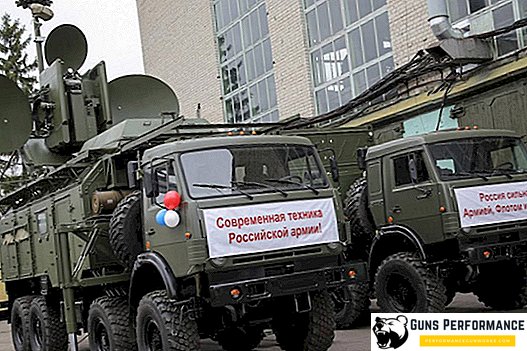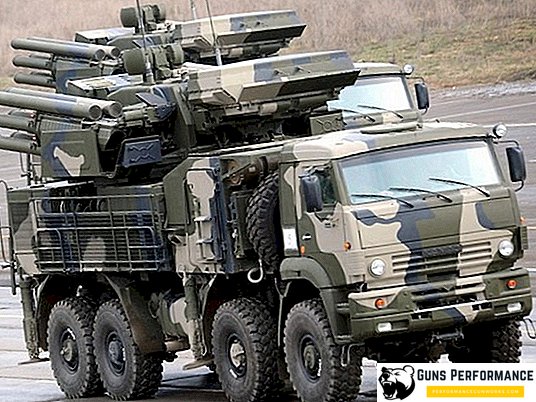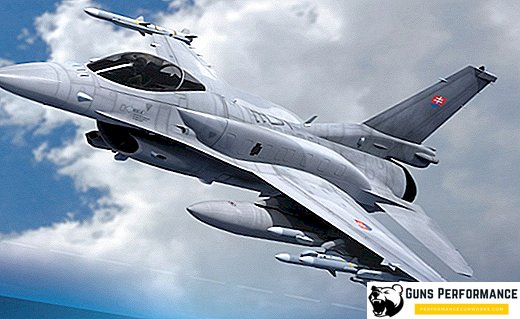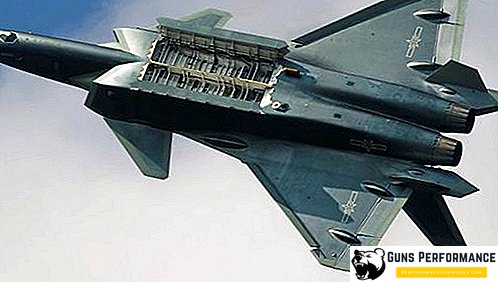On January 21, 1954, a truly significant event took place: in the USA, the world's first nuclear submarine Nautilus was launched from the shipyard Groton. A new era of the development of the submarine fleet. Submarines received the power plant, which allowed them for months not to appear on the surface, to develop underwater unimaginable speed and dive to unreachable depths. It seemed that the century of diesel-electric submarines (diesel submarines) ended.
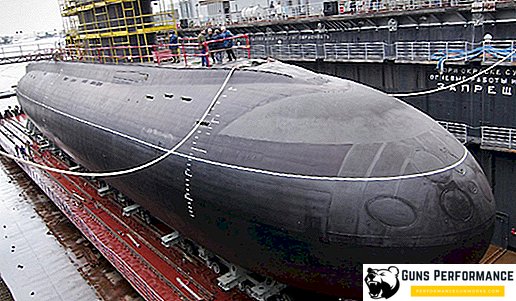
Diesel submarines are used today, moreover, in many countries there is an active development of such ships.
The fact is that nuclear submarines have their significant drawbacks. First, such submarines are noisier. A working nuclear reactor cannot be completely shut down, it emits continuous noise. Secondly, for its cooling, seawater is used, which then becomes slightly radioactive, but this allows the ship to be tracked down. In addition, nuclear-powered ships usually have considerable dimensions, which significantly limits the possibility of their use in shallow water. In addition, such submarines are very expensive, and only a few countries in the world can produce them.
The main non-nuclear submarine of the Russian fleet is a submarine of the type "Varshavyanka" - this is the name that combines ships of two projects at once: 877 and 636, as well as their numerous modifications, created in different years.

History of the creation of "Varshavyanka"
In the late 60s, the command of the Soviet Navy initiated the creation of a new-generation diesel submarine with a low noise level and powerful armament. The main tasks of the new submarine were to counter the enemy’s surface and submarine ships, reconnaissance, protect their own naval bases and communications.
The designers were given the task to create such a diesel-electric submarine, which would be superior to any similar ship of the likely enemy in a duel confrontation. This was to be achieved by reducing noise, increasing the detection range of the enemy, more powerful weapons.
At about the same time, an unusual submarine appeared at a potential enemy - in the USA, the nuclear submarine Albacore was launched. This boat had a streamlined hull, very much like a whale. Soviet designers when designing a new submarine decided to repeat it.

In 1974, a technical assignment for the development of a new ship appeared; the work was carried out at Rubin Central Design Bureau under the guidance of Kormilitsyn. The submarine was developed not only for the Soviet Navy, it planned to arm all the navies of the Warsaw Pact member countries. That is why the submarines of projects 877 and 636 were called Varshavyanka.
Compared with the ships of the project 641, the new submarine had to develop a higher underwater speed, be more seaworthy, have a good modernization resource. The military demanded that Varshavyanka be more automated, with fewer crews and better habitat conditions.
All Soviet diesel-electric submarines designed earlier were narrow and long, and the new submarines received a lightweight spindle-shaped hull, with a ratio of length to width of 7.3. The hull form was carefully calculated and repeatedly tested on the stands, so the boats of projects 877 and 636 have minimal hydrodynamic resistance.

The head submarine of project 877 was laid in 1979, the boat entered service in 1982.
A few words should be said about the notation. For the naval forces of the Soviet Union, boats of the project 877 were built, and two ships were made for export at once: 877E and 636. The submarines of both projects are called Varshavyanka, and the project 877 is named Paltus.

Project 636 ships is one of the latest and most advanced modifications of the Varshavyanka, their construction began in the mid-90s. Submarines of projects 877 and 636 were built at the shipyards of Komsomolsk-on-Amur, Nizhny Novgorod and St. Petersburg.
The submarine of Project 636 has more advanced features than earlier versions. It has the best combination of noiselessness and detection range of surface and underwater targets, more advanced automated control system, navigation equipment, more powerful and modern weapons.

Currently, the submarine "Varshavyanka" are in service with not only the naval forces of Russia, but also the Navy of China, India, Algeria, Romania and Poland.
For the Soviet Navy built 24 submarines, 15 of which were written off before the beginning of this century. In 2010, the first ship of the advanced series 636.6 was laid. To date, four submarines have already been launched and taken by the fleet. It is planned to build eight more such ships.
The cost of one submarine "Varshavyanka" of project 636 is approximately $ 300 million (for 2009).

The device PL projects 636 and 877 "Varshavyanka"
The submarine hull of projects 877 and 636 has a spindle shape with a minimum number of outboard openings. This form increases the speed of the submarine submarine and reduces its noise, but affects the seaworthiness in the surface position. Covering the hull reduces the reflection of the sonar systems of the enemy ships. Between the light and durable hull tanks are the main ballast.
Nasal horizontal handlebars - retractable.
The design of the boat is two-hull, it consists of a light and durable hull. The torpedo tubes are in the front upper part of the ship, and the hydroacoustic complex is in the bottom.

Fence retractable devices located above the second compartment and performs the usual functions: serves as a bridge, protects the periscopes, antennas and other lifting devices.
Durable housing has six compartments.

The first compartment has three decks: there are torpedo tubes on the top, living quarters on the second, and batteries on the lower deck.
The second compartment also holds three decks. At the top is the central post of the boat, under it posted navigational wheelhouse and radio room.

The third compartment consists of two residential decks and one with batteries.
In the fourth compartment is a diesel engine, and in the fifth - electric motors.
In the sixth compartment there are electromotors of an economical course and drives of rudders.
Movement both in the underwater and in the surface position is provided by an electric motor - the submarine "Varshavyanka" has a scheme of complete electric movement. The main power plant consists of a main electric motor (5500 hp.) And two diesel generators 4DL-42MH of 1500 liters each. with. (on the first boats of the project 877 - on 1 thousand hp.). The diesel engine is provided with an underwater work system, the submarine is equipped with two groups of lead-acid batteries.

Economical course provides a special electric motor capacity of 190 liters. with. There are two more backup motors that are used during maneuvering.
"Varshavyanka" (project 877) develops a speed of 17 knots under water, and in the surface position - 10.
The more advanced Varshavyanka project 636 has an underwater course of 20 knots and accelerates to 17 knots in the surface position.
Substation mechanisms are equipped with special coatings that absorb vibration, they are installed on shock absorbers. This, in combination with a low-noise propeller and a well-designed hull shape, makes the boat unobtrusive.
It must be said that the creators of the ship managed to achieve a very low noise level: the nickname “Black Hole”, which potential adversaries gave to Varshavyanka, is a clear confirmation of this.

"Varshavyanka" has an autonomy of 45 days. On the last modifications of the boat in the aft of the hull there is a rescue hatch, which provides evacuation of the crew from a depth of 250 meters.
The crew of the ship is 57 people, of which 12 officers.
The main armament of the submarine are six torpedo tubes of 533 mm caliber. Two of them can fire remote-controlled torpedoes. The ammunition of the boat consists of eighteen torpedoes, six of them are in the torpedo tubes and twelve - on the racks. The submarine can take ground mines in the amount of 24 pieces.

Project 636 submarines are also armed with Caliber anti-ship missiles (four missiles).
There is an automatic loader, which provides a high rate of fire.
On the submarine installed retractable anti-aircraft missile system, created on the basis of MANPADS "Strela-3". Ammunition - eight missiles.

The combat information control system (MUIS) "Moray" allows you to track targets and conduct effective fire on all depth ranges. The boat can accompany five targets simultaneously and conduct single or multiple rocket fire on two targets.
On the submarine installed navigation system "Andoga", which plots the course and gives the coordinates of the ship on the control panel. There are also passive and active radar, they can work in the periscope and surface positions.

Technical characteristics "Varshavyanka"
Below are the performance characteristics of the submarine "Varshavyanka" project 877.
| Displacement, t: | |
| surface | 2300 |
| underwater | 3040 |
| Speed, knots: | |
| surface | 10 |
| underwater | 17 |
| Sailing range (at a speed of, knots), miles: | |
| submerged | 400 (3) |
| in RDP mode | 6000 (7) |
| Immersion depth, m: | |
| marginal | 350 |
| working | 240 |
| Length m | 72,6 |
| Durable body length, m | 51,8 |
| Width, m | 9,9 |
| Draft average, m | 6,2 |
| Armament | |
| Torpedo tubes | 6 |
| Ammunition, torpedoes / mines | 18/24 |
| Ammunition SAM, missiles | 8 |
| Armament | |
| Torpedo tubes | 6 |
| Ammunition, torpedoes / mines | 18/24 |
| Ammunition SAM, missiles | 8 |


